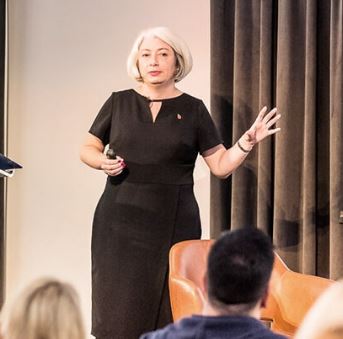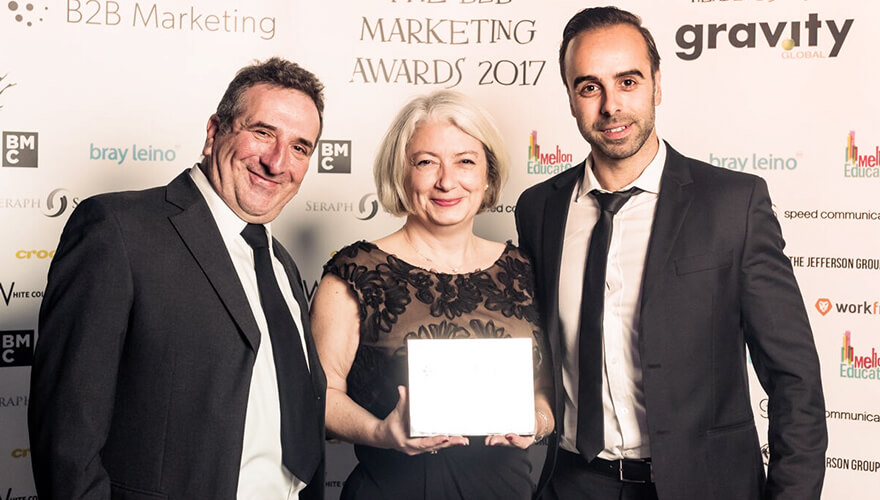How Fujitsu hit account-based marketing success
With Andrea Clatworthy, Head of Account Based Marketing at Fujitsu, EMEIA
Having been recognised as a leader in account-based marketing (ABM), Andrea Clatworthy’s time as head of ABM at Fujitsu is one to take note of. We look over her journey and the insights she has to offer to those seeking the same ABM success

Nearly five years ago, Andrea Clatworthy had an idea – to roll out ABM across her company.
It was a large-scale operation with its fair share of blunders, but as the results show, the risk and massive upheaval in changing Fujitsu’s internal culture was entirely worth it.
Today, she oversees a team who are responsible for over 100 accounts from across Europe, East Asia and Africa.
Training for ABM
For Andrea – and probably most leaders in the early stages of ABM – rolling out account-based marketing across an entire business’ culture was no mean feat: there was no easy and quick solution for retraining staff.
As one of the first companies to fully embrace ABM at its recognised conception, Fujitsu had to begin implementation and tweak accordingly.
Andrea makes light of her decision to take on ABM, putting it down to a heavy dosage of Benalyn, but aside from her laughter, she admits it was a lot of hard work to get to where she is now.
“At the end of 2013, we were in our planning cycle and I was thinking what we could do differently next year. How is marketing going to contribute to the business?
I thought ABM might be a good idea, so thought, let’s do it,” she explains.
That’s certainly what Fujitsu did, aiming to launch the strategy across the UK with 58 people taking on an account – a comprehensive approach that required significant training.
An intense two-day training course with was undertaken, not just by marketing function, but by wider departments such as sales and PR, in recognition of how alignment-heavy ABM can be.
“We focused on specific stuff such as Fujitsu terminology and case studies, but to do that we obviously had to do quite a lot of things,” Andrea warns, adding that in hindsight, this bloated approach is not something she would recommend.
Prioritising work
The implementation encroached on time and resources, which meant Andrea needed to prioritise.
“The first thing we had to do was stop doing some work to give people time to do the new ABM work,” Andrea states.
“So we stopped carrying out lead generation and the business didn’t notice, for a year.” This is a shocking concept for most marketing leaders, but the decision to withdraw from lead gen allowed an adjustment in focus toward ABM.
This meant Andrea’s team were able to receive in-depth support and resources to ensure successful delivery from the offset.
“We set up how-to guides, mentor groups and a buddy system. So everyone who was looking after an ABM account would share ideas and thinking. We had templates, we had everything you could possibly think of – it was brilliant.”
The concentrated process acted as sieve: those who were particularly articulate in ABM and those who were lacking in the complementing attributes for the strategy soon became evident.
Now Fujitisu had dipped its toe in the water, marketing was able to roll back the number of dedicated ABMers based on skillset. The company was grappling with deal-based marketing alongside, and although similar, staff and budget allocation needed to be selected carefully.
“ABM is when you’re looking at the whole account over three years – it’s a marathon, not a sprint,” Andrea summarises.
“Deal-based marketing (otherwise known as opportunity marketing) is when you’ve already identified an opportunity, there’s a deal to be won, it’s in the pipeline, there’s a sales team on it.
I decided to dedicate some specific resources to that because it was taking up so much time from the ABMers.”
It’s well known that account-based marketing doesn’t offer immediate gratification.
Two years after Andrea started implementing ABM, Fujitsu started to think about how it could be refined to different global markets.
“We launched our strategic growth programme. So, all of a sudden I had to look after 13 new strategic accounts that spanned Europe, East Asia and Africa. That was quite a challenge,” she confesses. “But we did it.”

How Fujitsu implemented ABM and hit success – Measuring results
In 2016, Fujitsu decided to measure and monitor the impact of ABM at a more concentrated rate.
Rudimentary metrics were introduced, otherwise known in the company as the three Rs: reputation, relationship and revenue impact, which were assessed on an account-by-account basis.
“That year, my little team of seven people generated 60% of that influenced pipeline and the other 290 people in marketing did the other 40%,” Andrea says with pride.
“We really managed to gain some huge credibility, which meant we were able to form a core team of dedicated ABMers.”
Despite not all of Fujitsu’s marketers making up the final ABM team, Andrea argues their initial training was not a waste and they still benefit ABM efforts.
“They now have it as part of their thinking. Every time they produce some content or plan a campaign, they automatically think about how it could be used in an ABM context.”
Andrea points to whitepaper assets as an example: following ABM training, general Fujitsu marketers now ensure their designs incorporate easy ways to tailor this to a specific prospect.
Andrea’s team are now regarded as true innovators, as the strategy proliferates further within the company.
“My team is now acting as a centre of excellence and helping other marketing colleagues that want to upskill, and we’ve got all sorts of tools and tactics people can use.”
Andrea proves that ABM isn’t all about tech. For the past five years, her team have used spreadsheets and Salesforce.
However, now the company has reached an established level of ABM maturity, it’s ready to expand its efforts further.
“We’ve done all of this as strategic ABM, but now we need to scale – so we have to think about a blend,” she says, looking forward to the future. “The reason we can do this now is because we’ve finally got an IT company to introduce some martech.”
Andrea’s journey has been a measured one that’s yielded lucrative results, but she really attributes her success to her team of dedicated marketers, skilled ABMers – a group, she says, that can be very hard to find.
